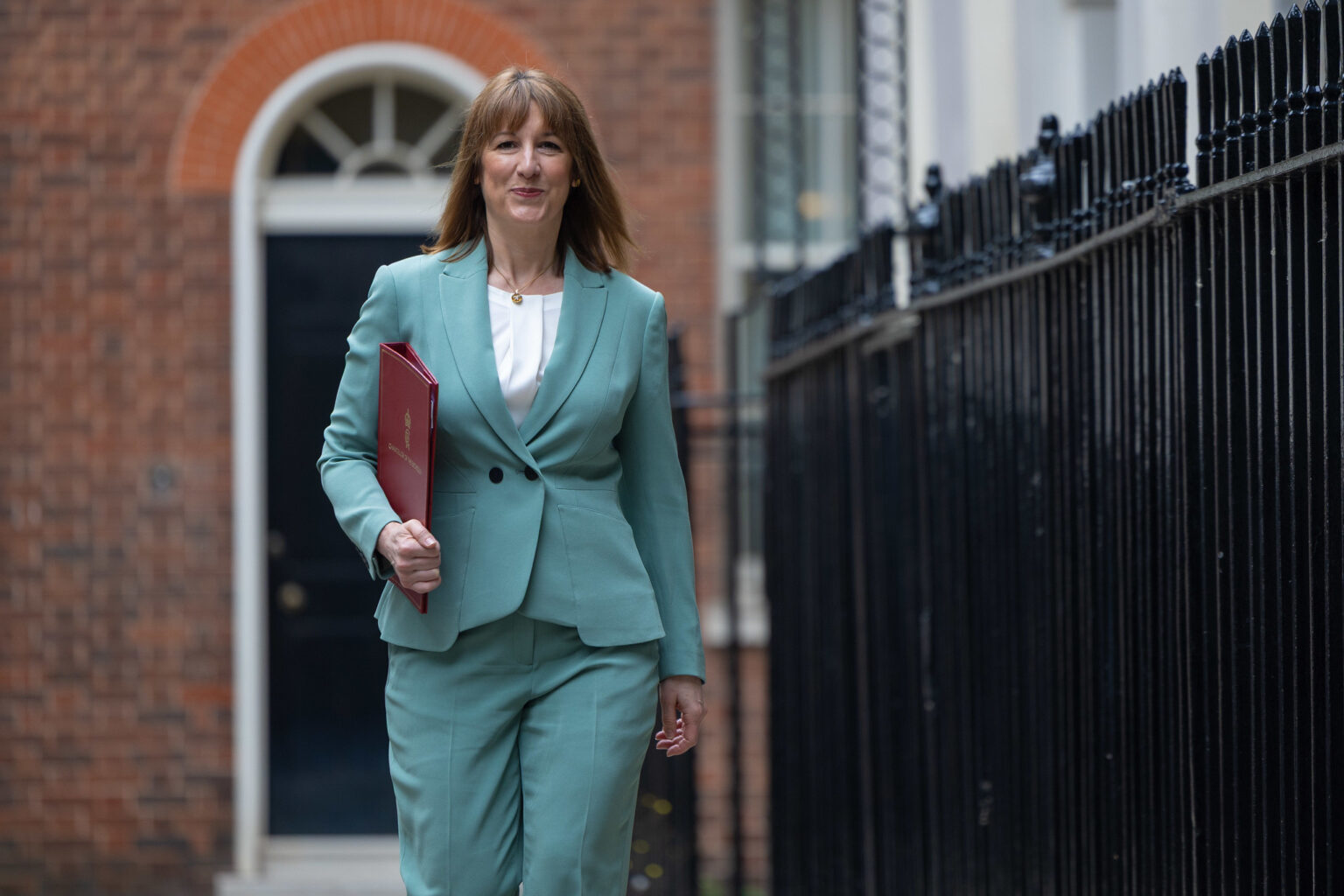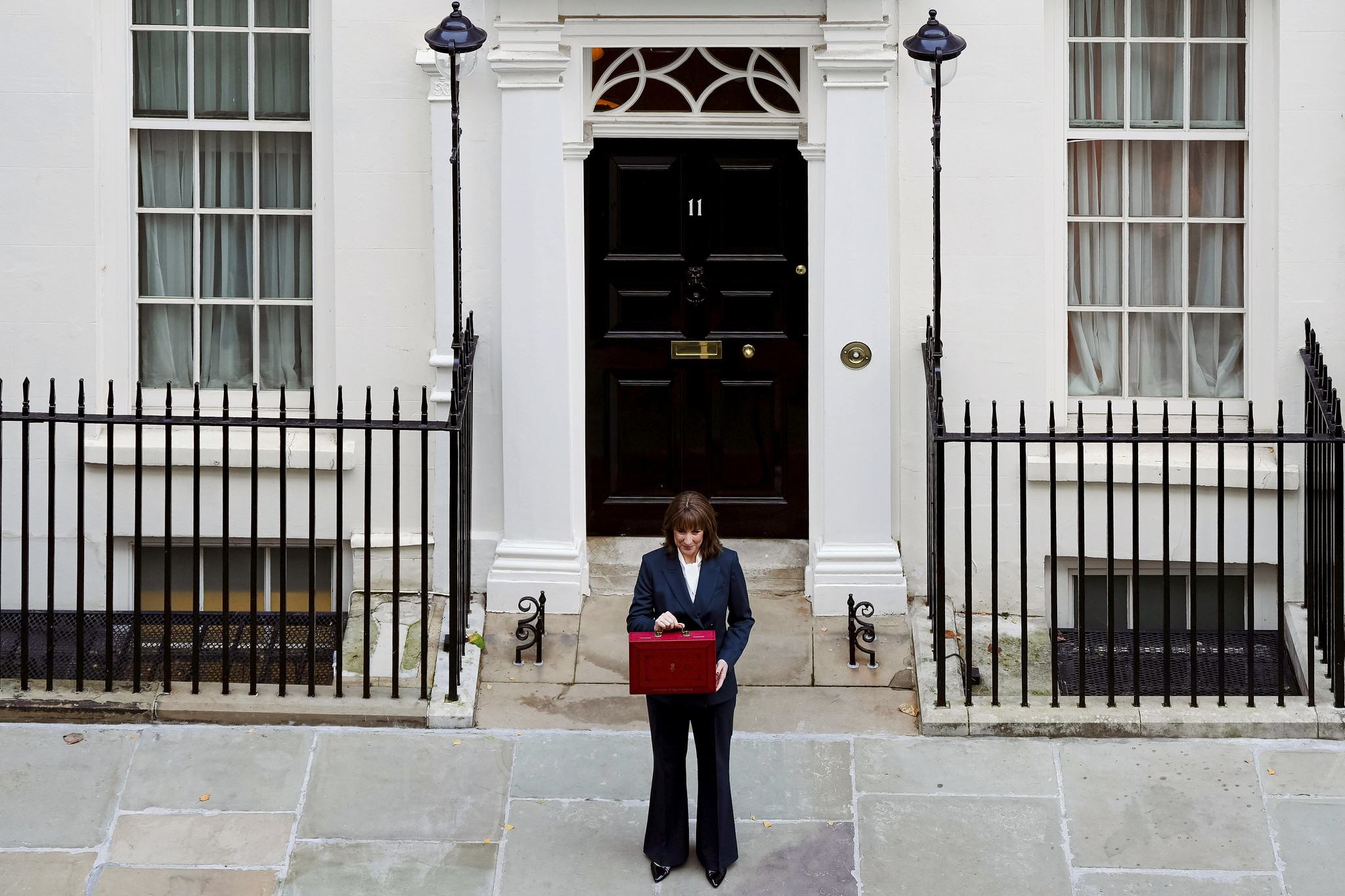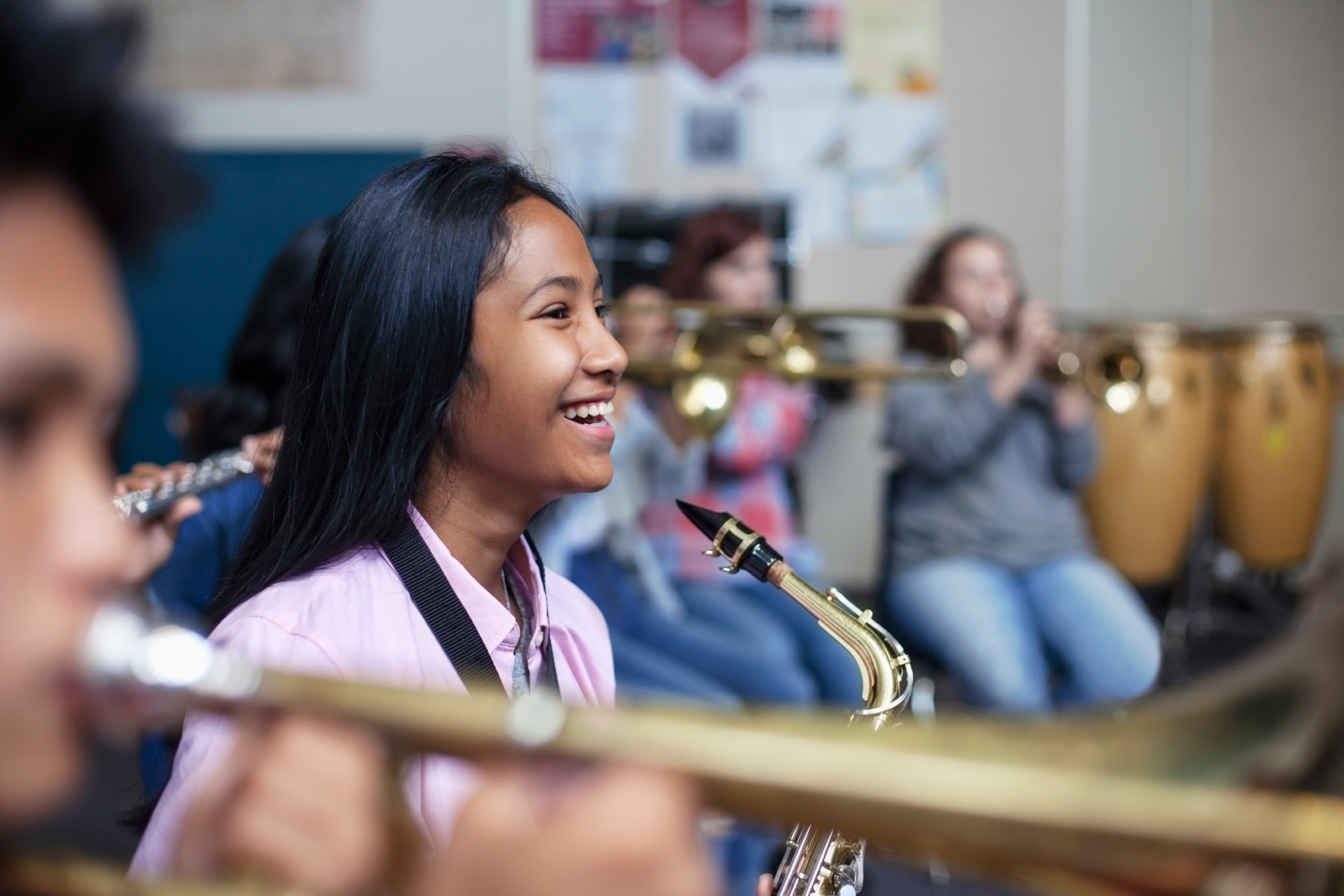The Chancellor has completed the 2025 Spending Review, unveiling plans for how much public money each government department will get to spend over the next 3 years.
Having set the total amount of planned spending in autumn 2024, she has now given each department an allocation for the rest of the parliament.
This matters because it will determine what, and how much, each department can do. But also because, in setting priorities for the government, it will have a real influence on the direction of the country.
So how has the Chancellor chosen to cut the cake – and what might it mean for the arts and culture?
Spending Reviews typically only plan the predictable elements of departments’ budgets: what are known as “Departmental Expenditure Limits” or “DELs”. Of all the DEL spending over the next three years, the Department for Culture, Media and Sport (DCMS) has been allocated 0.36%.
Education makes up the second-largest slice (16%), after Health (34%). Central grants to local councils comprise 2.2% of the total.
Both Education spending and Grants to Local Government will grow over the next three years in real terms, by 0.8% and 1.1% respectively. But Culture, Media and Sport spending will shrink by 1.4%, and the Foreign Office – which plays an important role in funding the BBC World Service and British Council – faces the biggest cut (-8.3%).
This is now the second successive Spending Review at which the Chancellor has implemented real-terms cuts to the DCMS at the same time as increasing overall spending.
At last year’s Spending Review, overall spending grew by 5.4% while the DCMS budget shrank by 6.2%. The gulf this year is much smaller, but DCMS is still being cut at almost the exact opposite rate at which overall spending is being boosted.
For a Chancellor to do this twice is unprecedented since Spending Reviews were introduced in 1998. Prior to this Government’s election, it had only ever happened once (in 2019).
Governments have tended to accompany increases in overall spending with (smaller) increases in DCMS spending, and cuts in overall spending with (generally much larger) cuts to DCMS.
This is a significant break from the situation under the previous Chancellor Jeremy Hunt, who chose in his 2021 Spending Review to grow spending on DCMS by almost twice as much as overall spending.
What could this mean for…
1. DCMS
The DCMS is the largest public funder of the arts in the UK Government. It directly funds 15 national museums and galleries, heritage and collection organisations Historic England and the British Library, and development agencies the British Film Institute and Arts Council England (which in turn administers core funds to nearly 1,000 further organisations via its National Portfolio).
These planned cuts mean that by 2029, the government is projected to be spending well over a third less per citizen on Culture, Media & Sport in real terms, compared with 2010 – down further from the 32% reduction currently.
Last year we published The State of the Arts report, which uncovered nothing short of a funding crisis in the UK arts sector – a crisis that requires action from the government.
This Spending Review will leave the DCMS with less to spend – and that will make it harder, not easier, for the government to act in support of the arts and public access to them.
We don’t yet know how much public funding cultural organisations will ultimately receive in the years ahead. It tends to be the case that an increase in DCMS spending drives increases in funding for cultural organisations and vice-versa. However, these decisions are taken separately by the DCMS and history suggests that changes to organisations’ funding may not be as drastic as changes to DCMS budgets.
As an important caveat to that, a report by the Office for Value for Money published alongside the Spending Review outlines an expectation that all government departments will implement cost-saving “efficiencies” over the coming years. It says “DCMS and its public bodies will deliver efficiency gains of £52m per year by 2028-29” through reforms to workforce, finance and grants, digital, communications and marketing and estates. This is equivalent to 3.4% of DCMS’ day-to-day spending budget in 2025-26 – below the 4% average across all departments, but still significant given the number of ‘arm’s-length’ bodies the DCMS has (including Arts Council England, the British Film Institute, Historic England, the British Library and the national museums and galleries) and the high proportion of the DCMS budget currently allocated to them. In the months ahead, the Campaign for the Arts will be doing everything we can to advocate for the protection of funding for cultural organisations.
Finally, the Government has chosen to omit a £0.4bn (25%) increase in DCMS’ day-to-day spending in 2028-29 from its reporting on the department’s average annual growth rate, citing “expected one-off costs”. If this increase were included, the growth rate for day-to-day spending over the Spending Review period would jump significantly, from -1.2% to +8.0%. While no explanation has been provided, these costs seem more likely to be related to a major international event (such as the Men’s UEFA European Football Championship) than to a planned windfall for cultural organisations.
2. Education
The Department for Education (DfE) is responsible for education and children’s services in England. Its budget will grow by 0.8% over the next 3 years.
Funding pressures on schools have been cited as a major driver of increasingly sidelined arts opportunities for children and young people. While we welcome a real-terms increase in the core schools budget, 0.4% is unlikely to relieve all of these funding pressures, especially once the costs of expanding free school meals and of rising demand for special educational needs provision are considered.
There are big outstanding questions about whether and how quickly the government will act to address concerning declines in arts education. In February we reported that the DfE had decided to end its funding partnerships for several cultural education programmes in 2025-26. The structural funding crisis in Higher Education shows no sign of abating either, and went unaddressed at this Spending Review. Increasing numbers of arts courses and even whole departments are battling cuts or closure, depriving future generations and our wider society of the benefits these disciplines provide.
But there was a welcome mention of the Government’s plan (via DCMS) to invest £132.5 million from dormant bank accounts into school libraries and opportunities for young people from disadvantaged neighbourhoods to take part in music, sport and drama. The Chancellor said that this was “so that the confidence and opportunities that those resources open up are no longer the preserve of the privileged few”. We hope to see this expanded in the 10-year National Youth Strategy, expected in the autumn.
3. Local Government
The Ministry of Housing, Communities and Local Government has played an increasingly important role in the arts and culture over recent years – delivering ‘Levelling Up’ funding for culture projects and overseeing strategies and policies for the public realm. Its budget will shrink by 0.6% over the next 3 years, but its grants to local councils will grow by 1.1%.
Taken together, local authorities are the biggest public funders of culture, heritage and libraries in England – however their investment has practically halved since 2010. More and more, councils’ support for the arts is being jeopardised by funding and demand pressures on local services, particularly social care.
The Chancellor announced that local councils’ core spending power will increase by 2.6% in real terms over the Spending Review period; however, this assumes a historically significant increase in revenue from council tax.
There will be some additional future funding for adult social care, but the Local Government Association has said that “it is unlikely to be sufficient to address all immediate pressures and ongoing challenges”. Baroness Casey’s independent review of adult social care will not finally report until 2028, but action will be needed sooner to prevent a further squeezing of councils’ budgets and of their still-vital investment in the arts and culture.
There was a welcome announcement of £350m in new investment for facilities such as libraries, parks and swimming pools in towns. There was also a commitment to provide “targeted, long-term local growth funding to support regional growth across the UK, completing the transition from the UK Shared Prosperity Fund”. The UKSPF was established in 2022 as a domestic replacement for EU structural funds withdrawn after Brexit, and one of its aims was to increase “engagement in local culture and community across the UK” by giving funds directly to local places. We will urge the government to maintain an emphasis on local culture and community in their planned replacement funds, and we await more details on these before providing an assessment of them.
4. Scotland, Wales and Northern Ireland
Outside of England, most decisions on public spending for the arts and culture are taken by the devolved administrations. They receive block grants from the UK Government, based on the ‘Barnett formula’, as well as targeted funding.
The Chancellor announced that over the next 3 years, UK Government funding will increase by 0.8% for the Scottish Government, 0.7% for the Welsh Government and 0.5% for the Northern Ireland Executive.
However, this does not guarantee that direct UK Government support for culture projects in Scotland, Wales and Northern Ireland will increase. Funding that is currently being distributed outside of England through the UK Shared Prosperity Fund “will be at the same overall level in cash terms”; once inflation is taken into account, that will mean a cut.
So what now?
In her speech to the House of Commons, the Chancellor said that this Government’s task is “to ensure that renewal is felt in people’s everyday lives”. The Campaign for the Arts believes that this is far more likely to succeed with meaningful investment in culture.
That’s why it’s so disappointing to see yet more real-terms cuts to Culture, Media and Sport pencilled in at this Spending Review, and continued neglect of the structural crises in Higher Education (which is disproportionately affecting arts courses) and social care (which is driving the collapse in local government investment in the arts). All this will make it harder for the artists and cultural organisations, teachers and researchers, local groups and venues that we need to unlock the potential of the arts for everybody.
There are some reasons for optimism. Real-terms boosts for schools and councils will go some way to alleviating the financial pressures that have caused the arts to be squeezed in recent years, and using dormant assets to invest in school libraries and young people’s access to the performing arts is a step in the right direction.
There is also much more still to play for. In the autumn and winter, governments in all four parts of the United Kingdom will publish their draft budgets for next year, outlining finer spending plans. The 10-year National Youth Strategy is expected soon, as is the start of the public consultation around the future of the BBC.
For all this and more, it’s vital that we keep campaigning for the arts and making the case for sustained cultural investment. Without it, we will have a less vibrant, equal, happy and healthy society, lacking the essential ingredients we need to thrive. With it, we can truly witness a decade of national renewal.
Like all our work, our research and analysis is funded almost entirely by small donations from our supporters, averaging £5.49 a month. If you found this useful, please consider becoming a donor with £5 a month or whatever you can afford – we truly rely on supporters like you.




7 responses to “What did the 2025 Spending Review mean for the arts?”
Short sighted. Ignoring the massive contribution arts organisations make to the economy. It is an area where the UK excels, but investment is still needed to maintain that excellence.
Such a cut to the Arts budget signals a failure to appreciate or acknowledge the real contribution the arts make to the nation‘s economic and moral welfare, as well as its international prestige. And this vital contribution by the arts was exactly what Keir Starmer paraded as his own position on Front Row just before the election – in addition to recognising the ongoing crisis in arts funding!
I understand education is important , but if these politicians want musicians and dancers at any public event they attend, they will have to support the arts universities ,to train theses students, it’s very worrying for arts students graduating next year , not knowing if they will find jobs due to funding cuts.
I think that this government has declined the use of money to help people who have no money! This is appalling. I have been a member of the Labour Party for years and currently appalled by the no support for people with no money!
Thought for the day:
How many people in Government have children wanting to learn a musical instrument but have to fund privately because there are no facilities either in Primary/ Secondary or Colleges. Shortsighted Gov spending, again.
This is a spineless reduction of a soft target, for a Government which is claiming to put the people first. It is appalling to realise that the arts are being penalised to provide funding for guns, bombs, and all the rest, to “protect” the country, which as a consequence, may well be less worth protecting.
In times of war people need more of the arts, not less.
The arts are an essential part of our lives. They provide sustenance . Food for the soul. A reason for living. A foundation. This also covers sport. People have to put up with a lot where governments fall short. Lives can be difficult. The arts give us the strength to carry on. They give us a meaning to life.